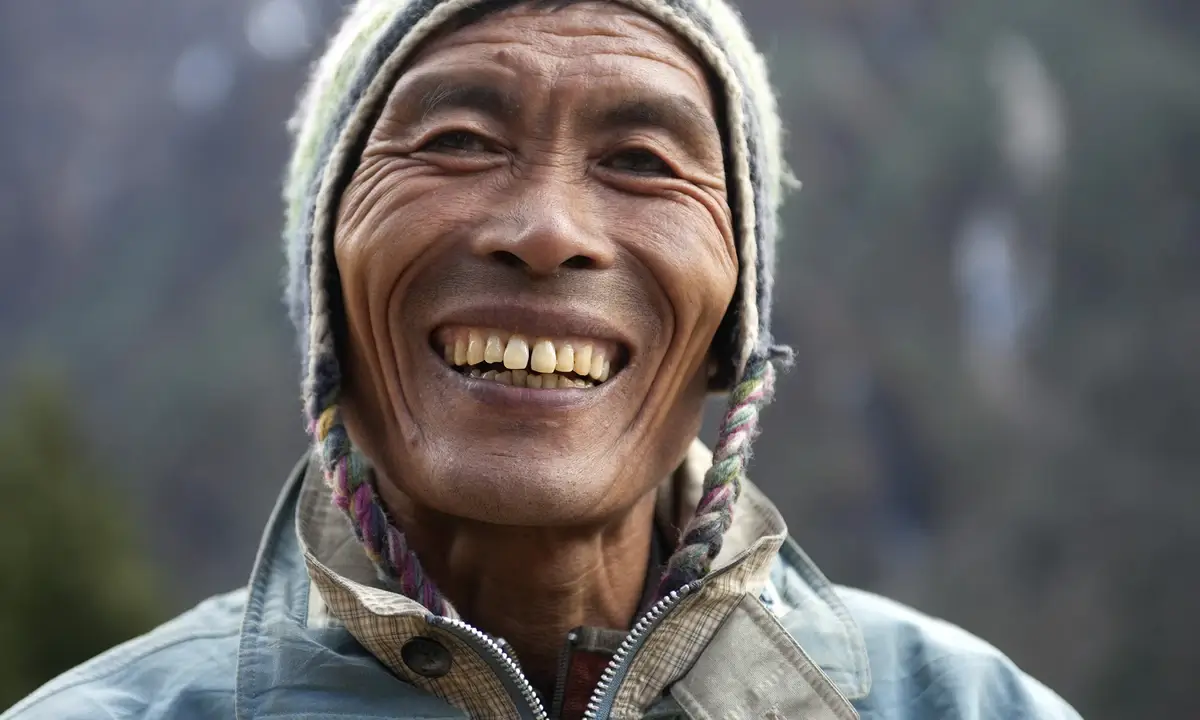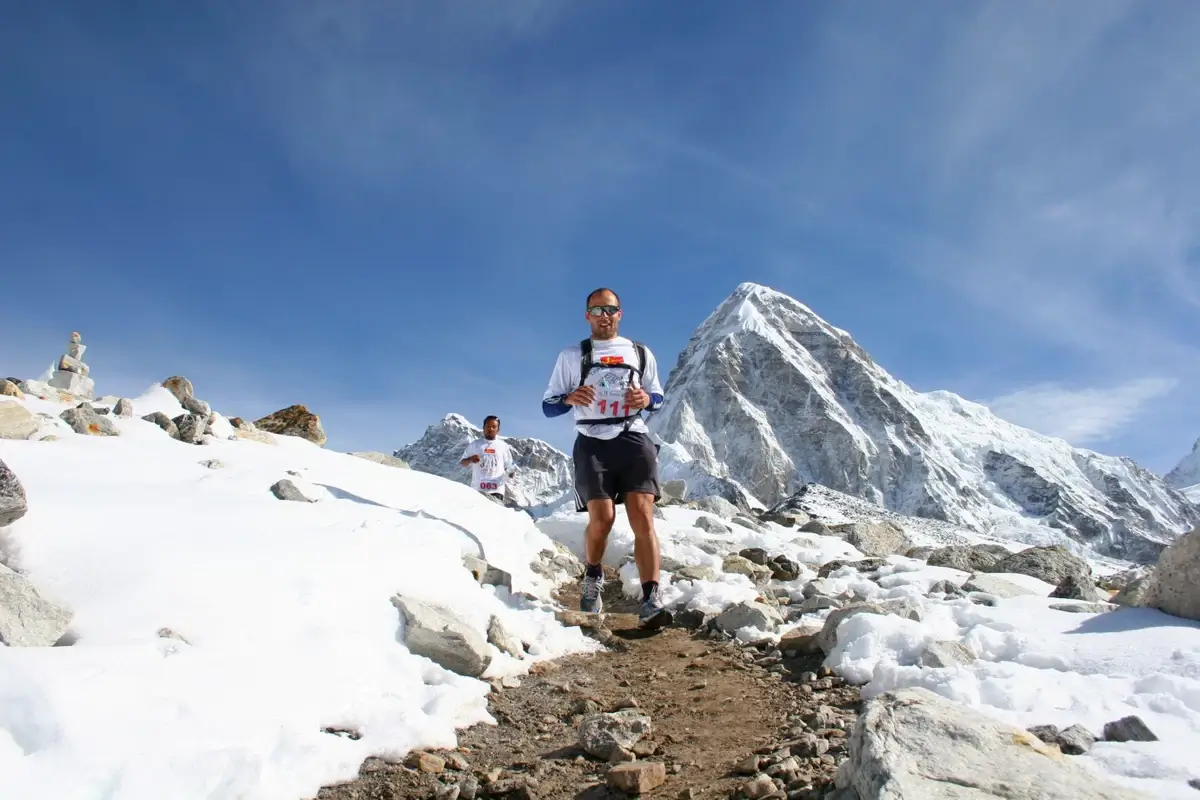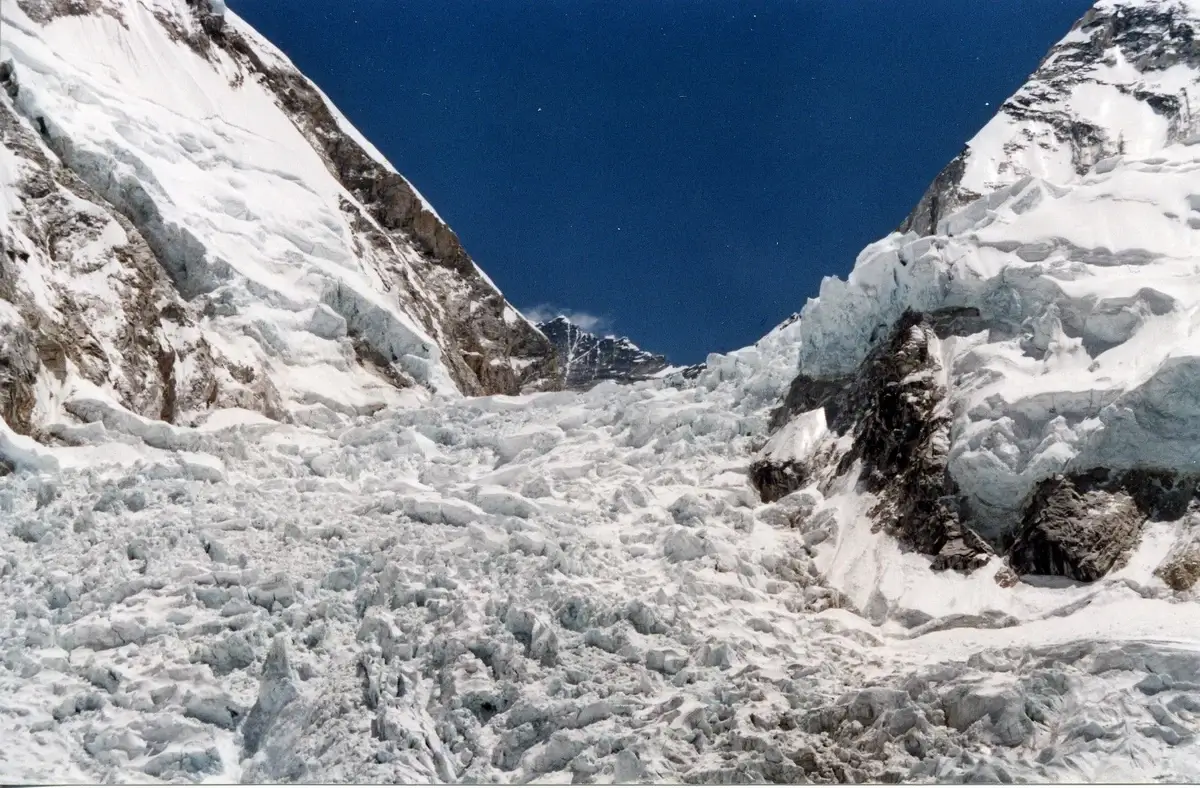Mount Everest, at a current height of 29,031.7 feet (8,848.86 meters), is more than just the world’s highest peak. It’s a dynamic natural wonder, continuously reshaping due to tectonic forces. The first recorded height in 1856 was 29,002 feet (8,840 meters), showing its gradual growth. Everest is not just about altitude; it’s a place of cultural, ecological, and geological significance, attracting climbers and researchers alike. In this article, we will explore 35 fun facts about Mount Everest, uncovering the many facets of this awe-inspiring mountain.
1. The Height of Mount Everest: Constantly Growing!
Mount Everest is growing approximately 4 mm per year due to tectonic activity. The collision of the Indian and Eurasian plates is responsible for this growth, making Everest a dynamic geological feature. Its height was last officially updated in 2020 through a collaboration between Nepal and China, now recorded at 29,031.7 feet (8,848.86 meters).
This continuous change in height challenges climbers and fascinates scientists, symbolizing the ever-changing nature of Earth’s topography.
2. Everest’s Names: A Cultural Mosaic
Mount Everest is known as ‘Sagarmatha’ in Nepal and ‘Chomolungma’ in Tibet, each name reflecting its cultural significance. ‘Sagarmatha’ translates to ‘Forehead of the Sky,’ while ‘Chomolungma’ means ‘Goddess Mother of the World.’
These names, rooted in local beliefs and languages, highlight Everest’s importance beyond a geographical landmark, embodying a sacred symbol in various cultures.
3. The First Successful Ascent: A Historical Feat
The first successful ascent of Mount Everest was achieved by Sir Edmund Hillary and Tenzing Norgay on May 29, 1953. This historic feat set a precedent in mountaineering, marking a new era in human exploration.
The expedition, which was a part of a British effort, was carried out with rudimentary equipment compared to today’s standards, showcasing extraordinary human endurance and willpower.

Image: nationalgeographic.com
4. Everest’s Deadliest Day: Tragedy in the Mountains
April 25, 2015, marks Everest’s deadliest day, when an avalanche triggered by the Nepal earthquake claimed the lives of 21 climbers. This disaster not only highlighted the mountain’s unpredictable nature but also raised questions about the safety and future of high-altitude mountaineering.
The 2015 avalanche surpassed the 1996 disaster, previously the deadliest, where 15 climbers lost their lives. This tragic day serves as a somber reminder of Everest’s inherent dangers.
5. The Sherpas: Unsung Heroes of Everest
Sherpas, the ethnic group native to the Himalayan region, are integral to Everest expeditions. Known for their extraordinary mountaineering skills and knowledge of the terrain, Sherpas often lead the way, fix ropes, and carry supplies. Tenzing Norgay, a Sherpa, was one of the first two individuals to reach Everest’s summit.
Their contributions, however, extend beyond physical support; they play a crucial role in ensuring climbers’ safety and success.

Image: howstuffworks.com
6. Everest’s Unknown Summiter: Mallory’s Mystery
George Mallory’s fate on Everest remains one of mountaineering’s greatest mysteries. He disappeared in 1924 during an attempt to summit, and it’s unknown if he reached the top before Edmund Hillary and Tenzing Norgay in 1953.
Mallory’s body was found in 1999, but it didn’t provide conclusive evidence of his success. This enduring mystery adds a layer of intrigue to Everest’s history.

Image: webtekno.com
7. The Youngest and Oldest Climbers: Records on the Roof of the World
Everest has seen record-breaking ascents by the youngest and oldest climbers. Jordan Romero, at age 13, became the youngest to summit in 2010, while Yuichiro Miura, at 80, became the oldest in 2013.
These records showcase the diverse range of individuals drawn to Everest, defying age barriers to achieve their dreams.

Image: medium.com / generationvoyage.fr
8. Everest’s Traffic Jam: The Crowding Issue
In recent years, ‘traffic jams’ on Everest have become a significant concern. The 2019 season saw a photo go viral, depicting a long line of climbers waiting to summit. This crowding not only increases the risk of accidents and altitude sickness but also raises environmental concerns.
It has led to discussions on regulating the number of permits issued, emphasizing the need for sustainable and responsible mountaineering.

Image: gq.com
9. The High-Altitude Graveyard: Perils of the Peak
Mount Everest is often referred to as the world’s highest graveyard, with over 300 deaths recorded since the 1920s. The harsh conditions, including extreme cold, treacherous terrain, and thin air, contribute to this grim statistic. Many bodies remain on the mountain, serving as somber reminders of the risks involved in high-altitude climbing.
These fatalities underscore the need for respect and preparation when tackling such extreme environments.

Image: Wikimedia Commons
10. Everest’s Ecosystem: Unique Flora and Fauna
Despite its harsh conditions, Everest’s ecosystem hosts unique flora and fauna. Species like the Snow Leopard, Himalayan Tahr, and Red Panda inhabit lower altitudes, while birds like the Bar-headed Goose and Choughs are seen at higher elevations. The plant life, including Rhododendrons and Junipers, thrives up to 5,500 meters.
This biodiversity highlights the resilience of life even in the most challenging environments.

Image: nationalgeographic.com
11. The Everest Marathon: World’s Highest Race
The Everest Marathon, starting at Everest Base Camp (17,598 feet) and ending at Namche Bazaar (11,286 feet), is the world’s highest marathon. This event, first held in 2003, tests athletes’ endurance in extreme altitude and rugged terrain.
The marathon commemorates the historic ascent of Hillary and Norgay, blending the spirit of adventure with athletic prowess.

Image: keadventure.com
12. The Role of Climate Change: Everest’s Melting Glaciers
Climate change poses a significant threat to Everest’s glaciers, with studies showing accelerated melting in recent years. This melting not only affects local water supplies but also increases the risk of glacial lake outburst floods. The changing landscape impacts climbing routes and the mountain’s ecosystem.
These changes serve as a crucial indicator of the broader impacts of global warming.

Image: nationalgeographic.com
13. Everest’s Base Camp: A City Above the Clouds
Everest Base Camp, located at 17,598 feet, is a temporary settlement for climbers during the climbing seasons. It’s equipped with tents, medical facilities, and even internet services, resembling a high-altitude city.
The base camp serves as the starting point for the summit attempts, bustling with activity and serving as a multicultural meeting point for climbers from around the world.

Image: Pinterest
14. The Economic Impact: Everest’s Financial Mountain
Mount Everest significantly impacts the economies of Nepal and Tibet. Climbing permits alone are a major revenue source, with Nepal charging $11,000 per climber. The influx of climbers and tourists supports local businesses, including guiding companies, lodges, and equipment suppliers. However, this economic dependency also raises concerns about sustainable tourism and environmental impact.
The Everest economy is a complex balance of financial gain and preserving the mountain’s integrity.
15. The Windy Summit: Extreme Weather Conditions
The summit of Everest is notorious for its extreme weather, with winds often exceeding 124 mph (200 km/h) and temperatures dipping below -60°C (-76°F). These conditions make the summit attempt not only challenging but also dangerous, contributing to the mountain’s death toll.
Understanding and respecting Everest’s weather patterns is crucial for climbers’ safety.

Image: spectrumlocalnews.com
16. Everest’s Death Zone: The Perils of High Altitude
Above 8,000 meters, Everest enters the ‘Death Zone’, where oxygen levels are insufficient to sustain human life for an extended period. This altitude brings severe risks like altitude sickness, frostbite, and hypoxia.
Decisions must be made quickly, as every moment in the Death Zone depletes a climber’s limited energy and oxygen supply.

Image: reuters.com
17. The First Winter Ascent: A Chilling Achievement
The first winter ascent of Everest was achieved by a Polish team on February 17, 1980. Led by Krzysztof Wielicki and Leszek Cichy, this feat showcased extraordinary courage and resilience, as winter on Everest brings even harsher conditions, including lower temperatures and stronger winds.
This ascent opened new possibilities in high-altitude winter mountaineering.

Image: andrzejzawada.pl
18. Everest by the Numbers: Fascinating Statistics
Mount Everest, standing at 29,031.7 feet (8,848.86 meters), has been summited by over 5,000 individuals since the first ascent in 1953. The average cost of an expedition ranges from $30,000 to $100,000 per climber. The mountain has approximately 200 bodies on its slopes, a stark reminder of its dangers. The youngest person to summit was 13 years old, while the oldest was 80.
These statistics reflect Everest’s allure and the extreme nature of its challenges.
19. The Everest Clean-Up Efforts: Preserving the Peak
Mount Everest faces significant environmental challenges, including waste left by expeditions. Recent clean-up initiatives have been crucial in preserving the mountain’s natural beauty. In 2019, a Nepalese team collected three metric tons of garbage and four bodies.
These efforts highlight the need for sustainable climbing practices and the responsibility of climbers to maintain the mountain’s pristine environment.

Image: time.com
20. The Role of Technology: Modern Everest Expeditions
Technology has transformed Everest expeditions. Advances in gear, like insulated clothing and oxygen systems, have increased safety and success rates. GPS and satellite communications provide better navigation and emergency support.
However, this technological evolution also raises questions about the purity of the climbing experience and the increasing reliance on technology in high-risk environments.

Image: redbull.com
21. The Everest Balcony: A Breathtaking Viewpoint
The Everest Balcony, located at approximately 27,559 feet, is a small platform offering climbers a brief rest before the final push to the summit. It provides one of the most spectacular views of the Himalayas.
This spot symbolizes the transition from the South Summit to the true summit and is a critical point in every climber’s journey.

Image: eliasaikaly.com
22. Cultural Significance: Everest in Mythology and Religion
Mount Everest holds deep cultural and spiritual significance. In Tibetan Buddhism, it’s considered the abode of Chomolungma, the Goddess Mother of the Universe. Local Sherpa and Tibetan communities have long revered the mountain, embedding it in their cultural and religious practices.
This spiritual dimension adds to Everest’s mystique, making it a sacred symbol beyond its physical presence.
23. The Everest Records: Beyond the Highest and Youngest
Everest’s records extend beyond the highest and youngest summiteers. These include Apa Sherpa and Phurba Tashi Sherpa, who’ve reached the summit 21 times each, and Lhakpa Sherpa, the woman with the most summits at nine.
Such records highlight the diversity of achievements associated with Everest, showcasing extraordinary human endurance and resilience.

Image: Britannica
24. The Khumbu Icefall: Everest’s Most Dangerous Passage
The Khumbu Icefall, located at the head of the Khumbu Glacier, is one of Everest’s most treacherous sections. This constantly shifting maze of ice is fraught with crevasses and seracs, posing significant risks.
The Icefall is a test of skill and nerve, and its navigation is essential for reaching the higher camps on the South Col route.

Image: Wikimedia Commons
25. Everest’s South Col Route: The Standard Path to the Top
The South Col Route, the most commonly used path to Everest’s summit, was pioneered by Sir John Hunt’s 1953 expedition. It starts at the Southeast Ridge and includes landmarks like the Khumbu Icefall, Western Cwm, and Lhotse Face.
This route, while popular, remains challenging and exposes climbers to the harsh realities of high-altitude mountaineering.
26. The Geology of Everest: Formation of a Giant
Everest’s formation is a tale of geological forces over millions of years. It originated from the collision of the Indian subcontinent with Asia around 50 million years ago. This tectonic activity continues to shape the Himalayas, contributing to Everest’s gradual rise.
Understanding its geology provides insight into the dynamic processes shaping our planet.
27. The Oxygen Challenge: Breathing at 29,000 Feet
Breathing at Everest’s high altitudes is a formidable challenge, with oxygen levels at the summit being just a third of those at sea level. Supplemental oxygen is often necessary to mitigate risks like hypoxia, altitude sickness, and mental impairment.
This aspect of Everest climbing highlights the extreme conditions humans can endure and adapt to.

Image: climbingthesevensummits.com
28. The Solukhumbu Region: Gateway to Everest
The Solukhumbu District in Nepal is the gateway to Everest, home to the Sherpa community and the starting point for most treks to Base Camp. This region, with its unique culture and breathtaking landscapes, offers a glimpse into life at high altitudes.
The trek through Solukhumbu, passing through villages like Lukla and Namche Bazaar, is an integral part of the Everest experience, blending adventure with cultural immersion.

Image: himalsamachar.com
29. Everest’s Microbial Life: Unseen Residents at the Summit
Recent research has revealed the presence of microbial life at Everest’s summit, an extreme environment previously thought too harsh for living organisms. These microbes, surviving in conditions with minimal oxygen, extreme cold, and high radiation levels, offer valuable insights into the resilience of life and the possibilities of life in similar extreme environments on other planets.
This discovery not only adds a new layer to our understanding of Everest but also contributes to the broader field of astrobiology.
30. The Everest Diet: Food on the Highest Peak
Climbing Everest requires immense energy, and maintaining a proper diet is crucial. High-calorie foods like dried meats, nuts, and energy bars are staples. At Base Camp, climbers can enjoy a wider variety of foods, including fresh vegetables and bread.
This dietary strategy is vital for maintaining strength and energy for the arduous climb.

Image: alpenglowexpeditions.com
31. Telecommunications on Everest: Staying Connected
Advancements in telecommunications have transformed communication on Everest. Satellite phones, internet, and even 3G services at Base Camp allow climbers to stay connected with the outside world.
These technologies not only provide a means of communication but also enhance safety, enabling timely weather updates and emergency responses.
32. Everest’s Hidden Caves: Mysteries in the Mountain
Mount Everest harbors hidden caves at high altitudes, some used by climbers as shelters. These caves, formed by geological processes, offer a brief respite from the harsh outside conditions. They are not only natural formations but also hold cultural significance, with some believed to be ancient meditation sites.
The exploration of these caves provides insights into Everest’s geology and history.
33. Everest Base Camp Traditions: Unique Practices
Everest Base Camp has its own set of unique traditions and practices. From the Puja ceremony, a ritual asking for safe passage, performed by Sherpas, to the flags and stones left by climbers as tokens of their journey, these traditions reflect the cultural and spiritual dimensions of Everest expeditions. They symbolize respect for the mountain and the local beliefs.
34. Everest’s Role in Climate Science: A Barometer for Global Warming
Mount Everest is increasingly being used as a barometer for global climate change. The ice and snow at its summit contain valuable climate data, with ice cores offering historical climate records. Scientists use these to understand past climate patterns and predict future trends.
This role of Everest in climate science highlights its significance beyond mountaineering, positioning it as a crucial point for environmental research.

Image: natgeofe.com
35. Everest’s Future: Challenges and Opportunities
The future of Mount Everest is shaped by challenges like climate change, environmental sustainability, and managing the increasing number of climbers. These issues require collaborative efforts for preservation and responsible mountaineering.
However, Everest also presents opportunities for scientific research, cultural exchange, and pushing the boundaries of human endurance and exploration.
FAQ
How old is Mount Everest?
Mount Everest is approximately 50 to 60 million years old. It formed due to the collision of the Indian and Eurasian tectonic plates, a process that continues to influence its growth and shape to this day.
How many floors is Mount Everest?
The concept of ‘floors’ doesn’t apply to mountains. However, to provide a comparison, if we consider the average floor height in buildings to be about 3 meters, Mount Everest, at 8,848.86 meters, would be equivalent to around 2,950 floors.
How fast does Everest grow?
Mount Everest grows at an average rate of about 4 millimeters per year. This growth is a result of the ongoing tectonic activity, specifically the movement of the Indian plate pushing northward into the Eurasian plate.
Is Mount Everest cold all year?
Yes, Mount Everest is cold throughout the year. Even during the summer months, temperatures rarely rise above freezing at high altitudes. The climate is characterized by permanent snow and ice, particularly near the summit.
How cold is it at the top of the Everest?
At the summit of Mount Everest, temperatures can drop as low as -60°C (-76°F) in winter and range from -19°C to -36°C (-2°F to -33°F) in the summer. The extreme altitude contributes to these frigid temperatures.
Why is Mount Everest so interesting?
Mount Everest is interesting due to its status as the highest point on Earth, its challenging climbing conditions, and its cultural and historical significance. It also plays a crucial role in geological and climate research, and its extreme environment supports unique ecosystems.
What is the most famous body on Mount Everest?
One of the most famous bodies on Mount Everest is that of George Mallory. He disappeared in 1924 during an attempt to reach the summit and his body was found in 1999. The mystery surrounding whether he reached the summit before his death adds to his fame.
How much does it cost to climb Everest?
The cost to climb Mount Everest varies, but on average, it ranges from $30,000 to $100,000. This cost includes the climbing permit, gear, supplies, guide services, and support for the duration of the expedition, which can last several weeks.





